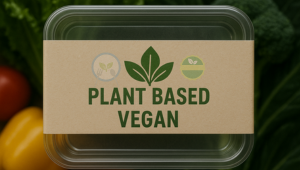Program Overview
This one-day program equips participants with a deep understanding of Hazard Analysis Critical Control Points (HACCP) and Preventive Controls frameworks, aligned with Codex Alimentarius, FDA FSMA, and global food safety standards. Delivered by an industry veteran with 25+ years of expertise, the program blends concepts, real-world recall cases, and interactive simulations to help participants identify hazards, establish critical control points, and design preventive systems. With a focus on practical application, participants will learn to tackle real organizational challenges, strengthen compliance readiness, and embed a culture of food safety.
Features
- Conduct effective hazard analysis and risk assessment for food processes
- Design and implement preventive controls aligned with global standards
- Develop, validate, and monitor critical control points (CCPs) to reduce risks
- Strengthen audit readiness and build a sustainable food safety culture
Target audiences
- Food Safety Managers
- Regulatory Affairs and Quality Assurance Teams
- Plant Heads
- R&D Professionals
- Operations and Compliance Teams
Curriculum
- 5 Sections
- 24 Lessons
- 1 Day
Expand all sectionsCollapse all sections
- Foundations of HACCP & Preventive Controls4
- 1.1Evolution of HACCP: Codex Alimentarius, FDA FSMA, EU standards
- 1.2CCPs (Critical Control Points), PRPs (Prerequisite Programs), Validation vs. Verification, HARPC (Hazard Analysis and Risk-Based Preventive Controls)
- 1.3Difference between traditional HACCP and Preventive Controls (PCQI framework)
- 1.4Exercise: “Spot the hazard” quick activity
- Hazard Analysis & Risk Assessment5
- 2.1Identifying biological, chemical, physical & allergen hazards
- 2.2Risk prioritization: severity, likelihood, detectability
- 2.3Decision trees, control measures, vulnerability assessment
- 2.4Real-Life Example: Listeria outbreak & allergen mislabeling cases
- 2.5Group Exercise: Hazard identification for a sample product line
- Designing Effective Preventive Controls5
- 3.1Categories: Process controls, sanitation controls, allergen controls, supply-chain controls
- 3.2Monitoring systems and documentation essentials
- 3.3Industry Standards: FSMA Preventive Controls Rule, ISO 22000, FSSC 22000
- 3.4Case Study: Preventive controls failure leading to a recall
- 3.5Exercise: Drafting a preventive control matrix
- Critical Control Points (CCPs) & Validation5
- 4.1Establishing CCPs, critical limits & monitoring methods
- 4.2Validation, verification, and record-keeping practices
- 4.3Root cause analysis (RCA), CAPA (Corrective & Preventive Actions)
- 4.4Real-Life Audit Failures: What went wrong and why
- 4.5Activity: Create a CCP decision tree for a beverage production process
- Implementation, Compliance & Culture5
- 5.1Integrating HACCP & Preventive Controls into daily operations.
- 5.2Regulatory Readiness: FDA inspections, EU audits, FSSAI perspective.
- 5.3Embedding food safety culture – leadership role & accountability.
- 5.4Case Reflection: Global recalls – learnings for corporates.
- 5.5Exercise: Mock regulatory audit with role-play.






